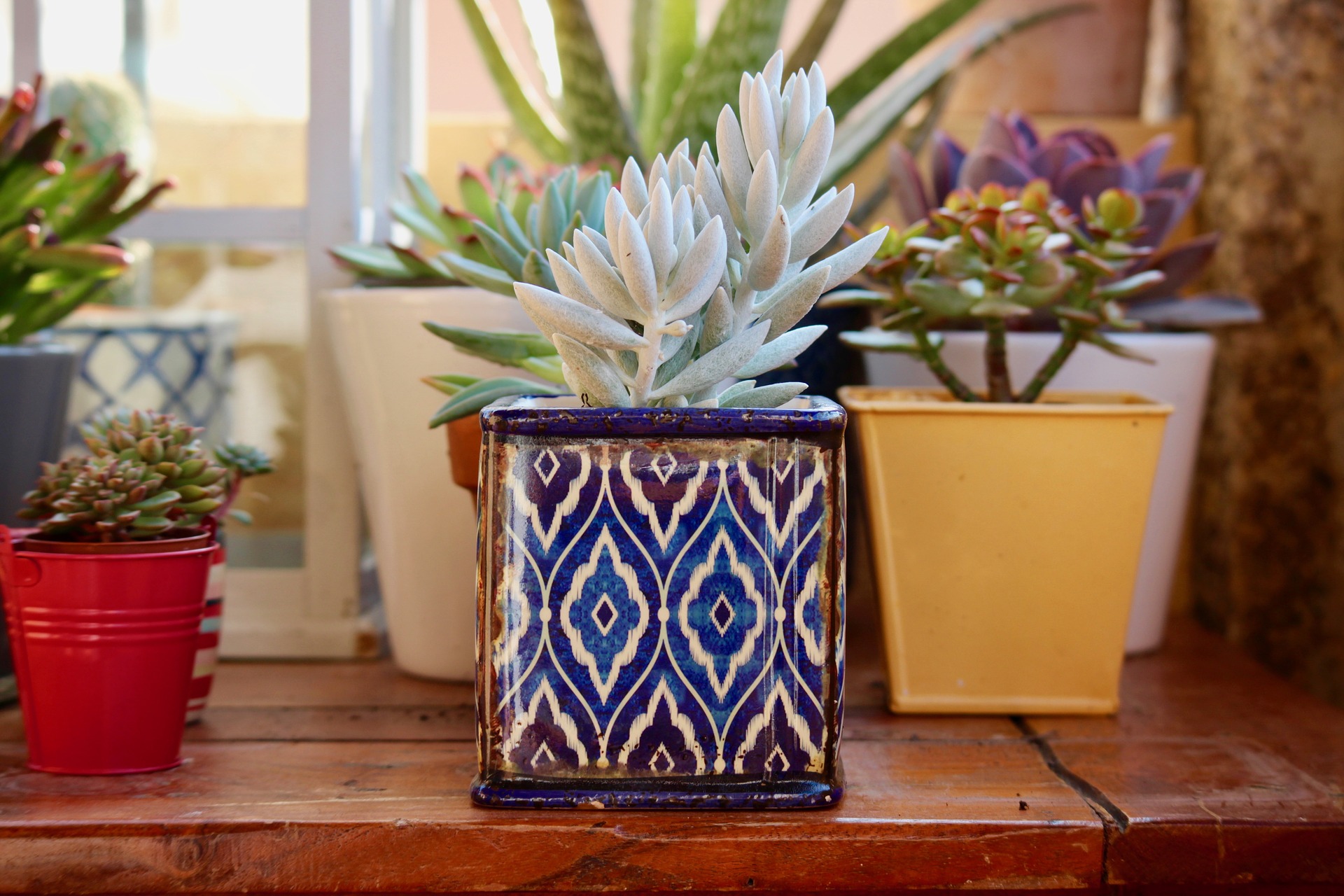So you’ve gotten into the current craze for houseplants. You’ve added a few at home and in your workspace. Hooray and good for you! Literally, plants are good for you and keep you connected to nature, healthier, and happier. Congratulations from your Good Earth Plant Company Eco-Warriors.

There is no need to add anything to your plant containers but the proper potting soil. Photo: SweetLouise/CreativeCommons License
Maybe you’ve had your plants for a year now, maybe 18 or 24 months. What now? One of the most common questions plant owners ask when moving on to the next stage of plant care expertise is this: when should I repot my houseplants?
Great question, and perfect timing. Spring presents the ideal opportunity to repot houseplants that need more room to spread their roots and grow. As we get more daily sunlight and temperatures rise, your plants react instinctively to the change of season and start to grow.
But if your plant is overgrown for its container, with crowded roots that have nowhere to expand, the plant can be stunted and stressed out. It can suffer from getting too little water and/or nutrients and it could drop leaves – or even die. Repotting doesn’t necessarily mean you need to change your plant’s container. The main focus of repotting is giving the plant fresh potting soil. Fresh soil contains fresh nutrients to feed your plants. But your plant might need new room to grow.
How do you know for sure? Here are a few things to look for:
- You see roots coming out of the drainage hole at the bottom of the container.
- Roots are growing so thick inside the container, they are actually raising the plant itself up out of the container.
- Your plant has stopped growing, or is growing more slowly than usual.
- Your plant has gotten top heavy, enough to fall over easily.
- Your plant is drying out quickly after watering and needs more frequent watering.
- You see salt or minerals building up on the plants or the container.
- You can see the soil shrinking inside the container.
Plants usually need to be repotted every 12 to 18 months. There are exceptions of course – slow growing succulents or cactus, for example.
If you decide to get a new container, there are some fantastic choices and something for everyone’s taste. Get creative! Read my blog post from the TPIE show earlier this year and you’ll see some great ideas and trends.
Whatever container you choose, don’t go too much bigger! Bigger is NOT better. Aim for a pot just slightly bigger than the original container holding your houseplant. Aim for three inches larger in diameter and depth for a smaller plant that might sit on a counter; up to six inches for a larger plant sitting on the floor.
Be sure the plant has good drainage. If you’re moving a plant you’ve had to water more often because of crowded roots, be sure you dial back the watering. A plant in a new container with a lot more soil can suffer from overwatering. You don’t want to kill your plant with kindness in its new home.
So you’ve chosen a cool new container and you are ready to move your plant. The day before you plan to repot, water your plant thoroughly. You may also want to pre-moisten the new potting soil.
Take a gentle, go-slow approach when removing your plant from its original container. This may take some patience if it’s root bound and really stuck in place. Turn the plant sideways, and tap the bottom of the container. Roll the container and tap the sides. If you need to loosen the plant, start gently at the sides of the container. This is where moistened soil is your friend. Avoid yanking the plant up by the stems. Use gravity to help you if necessary by turning the plant upside down, but be aware that soil may fall out.
Once the plant is out of the container, check the roots. If the plant has crowded roots, try to gently untangle them and give them some space. You want soil to fill in those spaces. If you need to do some slight trimming, that’s OK and can be helpful. Go slowly, and avoid damaging the plant’s stems or leaves.
You don’t need to remove all of the old potting soil. Leave one third to half, and pour a layer of fresh potting soil into the planter. Be sure to buy the correct potting soil from a nursery or garden center. It should be rated for either indoor or outdoor use. Do not use soil from you yard or garden.
Set the plant on top of the first layer of fresh potting soil. You may want to add more or remove a little so your plant will sit in soil about an inch below the container rim. Don’t fill the container all the way up. You want some room for water to soak slowly into the container.

When repotting, don’t pack the fresh potting soil too tightly around your plant’s roots. Photo: Gardening Solutions/CC
Avoid packing the soil tight. Your plant’s roots need room to spread out and settle in. Put in just as much soil as it takes for the plant to sit securely in its new container. Finally, give your plant a good watering in its new container. Wipe the container dry and place your houseplant in just the right spot. Your plant has a happy new home, and you have a new decorative item in your home.
Now, maybe your plant would like some new friends? Plants can’t have too many friends in our opinion! If you are in charge of the indoor plants in your workplace and could use some help, the Eco-Warriors at Good Earth Plant Company are ready to spring into action. All it takes is a call to 858-573-9600 or email us at [email protected]



